Introduction
Land use regulations play a vital role in shaping our cities and communities, influencing not only the environment but also the economy and social fabric. These regulations, set by local governments, guide development in harmony with community needs and environmental considerations. The goal is to achieve sustainable development, which balances economic growth, social equity, and environmental stewardship.
However, navigating these regulations can be complex, with policies like the National Environmental Policy Act introducing complexities and delays to development projects. Minimum lot size regulations, zoning restrictions, and development agreements are just a few examples of the intricacies involved. Understanding these regulations is crucial for developers, property owners, and individuals interested in land development, as they have a profound impact on property value, affordability, and quality of life.
With the right balance and understanding, land use regulations can foster sustainable development and enhance the well-being of current and future generations.
What Are Land Use Regulations?
Local governments set land use regulations to guide development harmoniously with community needs and environmental considerations. These rules have far-reaching implications, not only shaping the urban landscape but also influencing real estate development's economic, social, and environmental aspects. Sustainable development, which aims to improve quality of life without depleting future resources, is a key principle in these regulations.
It's a balanced approach, integrating economic growth with social equity and environmental stewardship. Urban planning policies like the National Environmental Policy Act (NEPA) and others can, however, introduce complexities and delays to development projects. These policies sometimes extend project timelines by years due to stringent compliance requirements.
Despite their intent to protect the environment and enhance disclosure, they can inadvertently stifle development and incur high costs. Minimum lot size regulations, common across the United States, exemplify this complexity, impacting affordability for buyers and homeowners alike. In some cities, minimum lot sizes reach extensive proportions, like Dallas' prevalent 7,500-square-foot requirement.
Zoning is another aspect that many people recognize but may not fully understand beyond video games like SimCity. North American zoning is notably strict, segregating land uses into distinct districts, which is not the case everywhere globally. The rigidity of such zoning can protect neighborhood character but also limits flexibility in land use.
Development agreements between property owners and local governments are tools that can provide clarity and stability for both parties. They establish conditions for development projects in exchange for public benefits, helping to navigate the volatile commercial real estate market. These agreements offer developers a degree of certainty, mitigating against political shifts and regulatory changes.
Real-life stories highlight the impact of these regulations. In Coral Gables, Florida, Orlando Capote has been in a two-decade battle to defend his family home against overwhelming development. Virginia's proffer system is another example, where local governments negotiate with developers for public benefits without infringing on property rights.
Such arrangements can lead to more sustainable and community-focused development, though they require careful negotiation to ensure mutual advantages.
In summary, land use regulations are pivotal in shaping our cities and communities. They influence not just the environment but also the economy and social fabric. With the right balance and understanding, these regulations can foster sustainable development and enhance the quality of life for current and future generations.
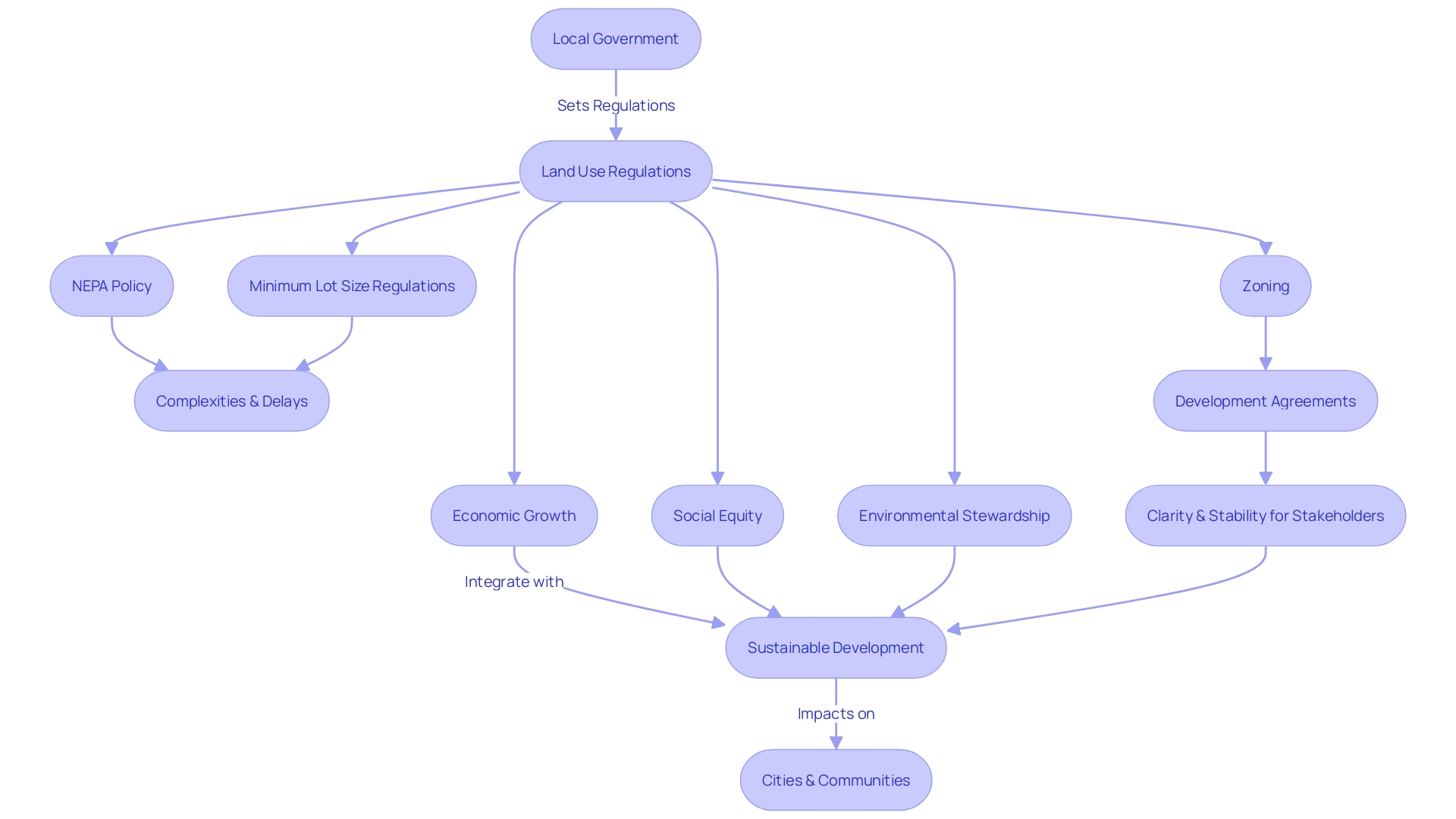
Types of Zoning Districts
Zoning is a fundamental component of urban planning, serving as a blueprint for the permissible use of land within different districts. These categories, which include residential, commercial, industrial, agricultural, and mixed-use zones, are governed by specific regulations that define what activities and constructions are acceptable. For instance, in Auckland, relaxed zoning regulations led to the construction of over 20,000 new homes, demonstrating the impact of zoning on housing availability.
Similarly, recent efforts in Charlotte and Minneapolis have shown a commitment to comprehensive zoning reform. In Charlotte, the city council passed legislation to create more housing stock, while Minneapolis saw groundbreaking zoning reform that engaged a wide range of voices, including those often excluded from land use discussions. This reform is not just for development but also addresses broader social issues such as segregation and economic mobility.
The case for reform extends to environmental concerns, as efficient land use is a potent climate action tool. Urban sprawl is linked to a third of global greenhouse gas emissions, underscoring the need for more compact, mixed-use communities. These reforms are shaped by the understanding that property ownership includes the right to utilize the land—a principle deeply rooted in America's founding philosophy.
As cities like Charlottesville advance towards greater residential density, it's clear that the evolution of zoning ordinances is driven by the imperative to meet modern needs while balancing the rights of property owners.
Land Use Regulations: Key Concepts
Understanding the intricacies of land zoning and use regulations is pivotal in managing the development and utilization of land. At the heart of these regulations are zoning ordinances, which serve as local laws delineating land use within specified districts. These ordinances govern a plethora of factors including permissible building heights, setback requirements, parking provisions, and density restrictions.
Zoning's essence lies in compartmentalizing land into zones where particular uses are permitted, thereby shaping the urban landscape and ensuring compatibility between different land uses. For instance, certain areas may be designated exclusively for residential, commercial, or industrial purposes, with specific conditions and restrictions applied to each category.
Occasionally, a proposed land use may not align with the underlying zoning designation. In such cases, conditional use permits may come into play, allowing a particular use to proceed under specific conditions, despite not being broadly permitted within the zone. Similarly, variances provide a mechanism for exceptions to zoning rules, acknowledging unique property characteristics that justify a departure from standard regulations.
A case study from the Urbanity Project at the Mercatus Center highlights the impact of minimum lot size regulations on housing markets. For example, in Dallas, a prevalent minimum lot size of 7,500 square feet illustrates how such regulations influence property prices and availability. Research further suggests that reducing minimum lot sizes, as seen in Houston, can lead to increased development and affordability by allowing more homes to be constructed on a given acre of land.
Moreover, the revision of zoning ordinances is an ongoing process, responsive to evolving city landscapes and societal needs. Recent news from the Provincial Planning Statement (PPS), 2024, underscores the importance of land use planning in addressing housing shortages, economic development, and environmental protection.
It is crucial to appreciate that the concept of property ownership rights is deeply rooted in the American ethos, where the right to use one's property is deemed fundamental. This principle, however, has been transformed by the advent of zoning laws, which must balance individual property rights with the broader objectives of urban planning and community welfare.
In summary, zoning ordinances, conditional use permits, variances, and non-conforming uses are key concepts that define the framework within which land use and development occur. These concepts shape the landscape of our cities and towns, influencing everything from the availability of affordable housing to the preservation of community character.
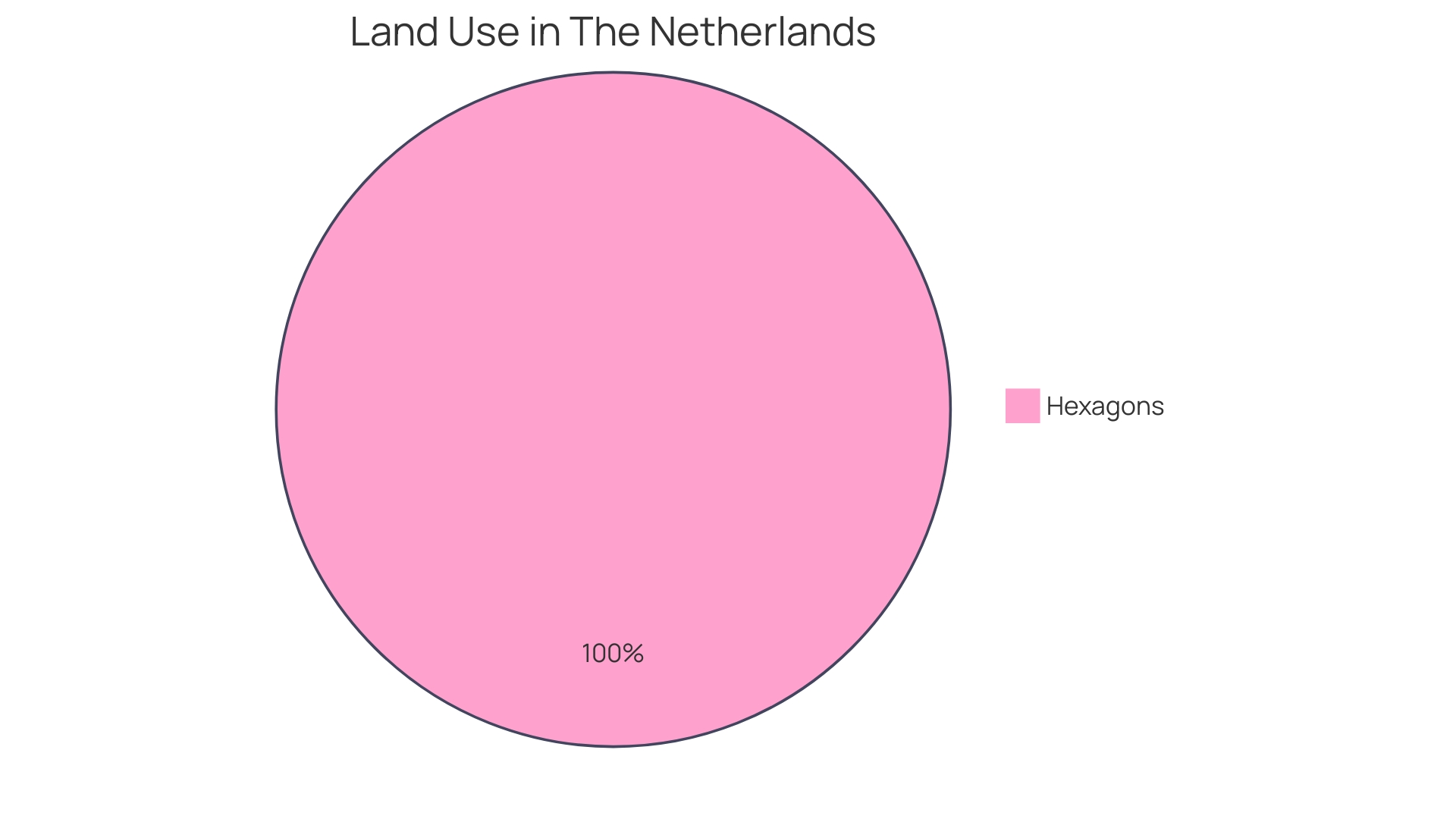
Zoning Laws and Property Rights
Zoning regulations serve as the blueprint for urban development, dictating the permissible uses for land within specific districts. Originating from early 20th century ordinances in cities like Los Angeles and New York, these laws have evolved from questionable origins to become critical tools in urban planning. Each zoning district comes with a set of rules that can significantly impact the potential and value of a property, confining certain areas to specific uses such as residential, commercial, or agricultural.
This, in turn, can restrict the supply of new housing units, affecting affordability due to the limitations on residential construction.
Historically, the concept of property ownership in America was deeply intertwined with the freedoms of life and liberty, a philosophy enshrined in the nation's founding documents. Thus, the imposition of zoning was initially seen as an unconstitutional infringement on these rights. However, modern zoning has become a complex system of sector divisions and use regulations that influence nearly every aspect of daily life, from where individuals reside and work to where they shop and relax.
Recent developments in zoning practices aim to address housing shortages and affordability. For instance, initiatives like the Affordable Housing Plan encourage higher residential density, offering property owners developmental rights and incentives for creating below-market housing units.
Nevertheless, zoning can sometimes have unintended detrimental effects, as evidenced by news stories where zoning disputes lead to housing crises or the displacement of long-term tenants. These instances highlight the ongoing tension between individual property rights and collective urban planning objectives. As zoning laws continue to shape the landscape of cities, property owners must navigate these regulations carefully to fully understand their rights and the potential of their land.
Compliance with Zoning Regulations
Understanding zoning regulations and adhering to them is imperative in the realm of land development. Zoning laws serve as the framework within which land can be utilized, dictating the permissible types of structures and activities in various districts to maintain an orderly urban environment. Developers must navigate these regulations, ensuring they secure the necessary permits and conform to established standards, such as setback requirements and environmental protections.
The complexity of these laws is evidenced by the evolving landscape of safety standards, as seen in the case of California utilities and their role in mitigating wildfire risks. These companies operate under stringent regulations that balance safety concerns with economic implications, a scenario that parallels the challenges faced in land development.
Recent reforms, as examined by Professor Brian J. Connolly, emphasize the importance of legal strategy in defending zoning reforms that aim to enhance housing affordability and urban redevelopment. Connolly's expertise, drawn from a decade of legal practice and academic research, underscores the intricate relationship between public and private land use regulation and its impact on community development. As municipalities strive to align development with infrastructure and foster economic growth, as outlined in the Provincial Planning Statement of 2024, compliance with these regulatory frameworks is not just a legal mandate but a foundational aspect of responsible development.
Furthermore, the history of zoning and land use is deeply intertwined with societal notions of property rights, including the fundamental rights to possess, use, exclude, and alienate. The evolution of these concepts, as discussed by Williams et al., reveals the lasting influence of race and the legal right to exclude on the fabric of zoning laws. This legacy continues to shape the dialogue around equitable land use and the responsibility of today's planners and stakeholders to foster inclusive communities.
The intersection of zoning, community interest, and legal precedent creates a dynamic landscape that developers must navigate with diligence and foresight.
Impact on Property Value and Quality of Life
The intricate web of land use regulations, encompassing zoning laws and other restrictions, forms a critical backdrop against which property values and community well-being are shaped. For instance, the omnipresent minimum lot size requirements significantly impact housing affordability, driving up costs for both potential homeowners and current residents. Notably, in places like Dallas, lots with a minimum size of 7,500 square feet are commonplace, reflecting the deep entrenchment of such statutes in the fabric of American land-use policy.
Moreover, the inflexibility of North American zoning laws stands out globally, often segregating land uses into strictly defined districts. This rigidity can stifle the organic growth of cities, as seen in the example of Somerville, Massachusetts. Despite its desirability, marked by high walkability and a vibrant community, housing prices there soar, with numerous listings exceeding the million-dollar mark, underscoring the market's response to such desirable locales.
Yet, the fiscal implications of land use regulations extend beyond property prices. A report by the National Association of Home Builders (NAHB) revealed a staggering 44% increase in regulatory costs for new single-family homes over a decade, from $65,224 in 2011 to $93,870 in 2021. This uptick parallels the broader upward trajectory of construction materials costs, which rose between 44% to 54% during the same period, and a more than doubling of median house prices in areas like California.
To navigate this complex terrain, it is imperative for stakeholders—property owners, buyers, and developers alike—to deeply understand the multifaceted impact of these regulations. The pursuit of 'public welfare,' a cornerstone of zoning that has been critiqued for its subjectivity, underscores the need for a more balanced approach that reconciles the protection of community character with the pressing need for housing affordability. Reforming zoning to focus on public safety and health, while minimizing arbitrary restrictions, could pave the way for a more equitable and dynamic urban development.
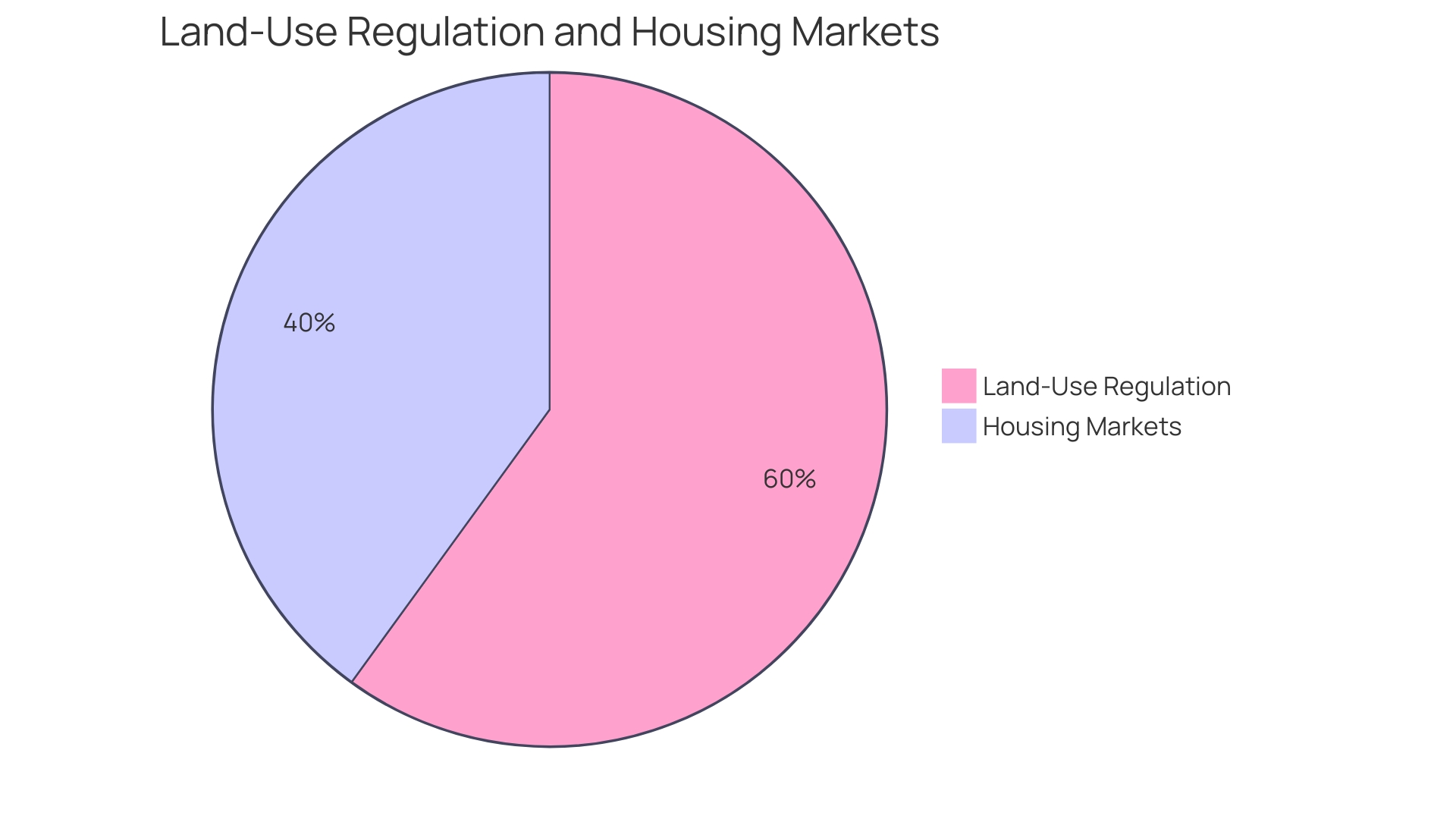
Building Codes and Standards
Building codes and standards are pivotal in shaping the use and integrity of land. They set forth a framework that ensures structures are sound, secure, and conducive to the welfare of the community. These codes are not uniform across the board; rather, they are influenced by regional considerations, including climate and local hazards.
For instance, areas prone to wildfires have seen a shift towards more stringent building codes to mitigate risk and enhance safety. Similarly, the adoption of modern building codes contributes significantly to disaster resilience, reducing the likelihood of damage and aiding in recovery efforts.
The International Code Council has been instrumental in consolidating various codes since the 1990s, providing a more unified approach to building safety. This is essential as building codes not only dictate the structural integrity but also encompass fire safety, energy efficiency, and accessibility. The development of these codes is a collaborative effort involving non-profit organizations and stakeholders, ensuring that the resulting regulations reflect a consensus on safety and sustainability.
Moreover, the evolution of building codes is evident in their contribution to climate action. Land use reform and the promotion of compact, mixed-use communities can significantly reduce greenhouse gas emissions by curbing urban sprawl and its associated environmental impacts. The efficient development of urban and suburban areas can lead to more sustainable living, highlighting the intersection of building codes with broader environmental and social goals.
Local governments play a crucial role in this dynamic, with some areas exercising 'home rule' to adopt and enforce building codes that cater to their specific needs. This autonomy allows for tailored responses to unique local conditions, which can be more effective than a one-size-fits-all approach. The recognition of local specificities is crucial in fostering communities that are both resilient and aligned with sustainable development principles.
In summary, building codes and standards are more than just a checklist for construction; they are a reflection of societal values and a commitment to safety, sustainability, and adaptability in the face of changing conditions and challenges.
Navigating Zoning Maps and Local Planning Departments
To effectively navigate the landscape of land use regulations, it's crucial to utilize tools such as zoning maps and engage with local planning departments. Zoning maps, which delineate various zoning districts, are indispensable for identifying the regulations that apply to a particular property. For example, the National Zoning Atlas, although currently covering only six percent of U.S. jurisdictions, is a promising resource that offers insights into zoning for areas where 35 million people reside.
However, completing the Atlas for the entire country requires considerable resources, including more staff and time, as the process involves meticulous analysis by human researchers.
Local planning departments play a pivotal role in enforcing land use regulations and can offer valuable guidance on zoning requirements and the permit process. For instance, the Provincial Planning Statement (PPS), 2024, directs land use planning in communities, addressing issues such as housing, development land, economic opportunities, and infrastructure needs, while ensuring environmental protection and hazard avoidance. Municipalities, as the primary decision-makers, implement these provincial policies through municipal official plans and related documents, such as zoning by-laws.
Moreover, understanding the sheer scale of zoning regulations is daunting, with about 39,000 general-purpose local governments across the country, each with its approach to zoning. The complexity is compounded by the fact that zoning ordinances are not static; they evolve in response to changing city conditions, as reflected by James Freas's statement on the ongoing revision of zoning ordinances to reflect prior plans for increased residential density.
The U.S. Census Bureau's categorization of governments, including several types of local governments such as county, township, and municipal governments, as well as special-purpose local governments, underscores the multiplicity of regulatory bodies one might encounter in land use planning. Furthermore, the NZLUD database provides detailed information on zoning codes for over 2,600 municipalities, which is a valuable tool for understanding the implications of zoning regulations, including minimum lot sizes, density restrictions, parking requirements, and building height limits.
In conclusion, establishing open lines of communication with relevant authorities and leveraging available zoning information are key to ensuring compliance and facilitating a smooth land use process. Stakeholders are encouraged to submit written comments and remain engaged with local planning efforts to be informed of any changes that may affect their property or development plans.
Non-Conforming Uses and Structures
Land use regulations often present a complex layer of governance that can directly impact property development and ownership. A notable aspect is the status of non-conforming uses and structures; these are buildings or land uses that predate and don't comply with current zoning laws, yet were legally established under previous regulations. Typically, these non-conforming entities are permitted to persist.
However, property owners may face stringent limitations when it comes to modifying or expanding such properties.
For example, in efforts to mitigate housing affordability issues, some cities have adopted zoning reforms, as seen in Minneapolis where legal challenges were met with strategies to defend the reforms. These reforms can affect the status of non-conforming properties by potentially allowing changes that align with new goals, such as increased density or mixed-use development. An understanding of these evolving regulations is essential, especially when considering renovations or alterations to existing structures.
Moreover, it's crucial to be aware of the legal requirements tied to specific property modifications. For instance, when converting basements into habitable spaces, there are stringent egress window requirements for safety. Ignorance of such regulations can lead to non-compliance and potential legal challenges.
Cities like Houston have shown that modifying zoning codes, such as reducing minimum-lot-size requirements, can significantly influence the fabric of urban development. By allowing smaller lot sizes, Houston has increased the potential for greater housing density, challenging the traditional zoning approach that has long been criticized for promoting sprawl and segregation.
The dialogue surrounding zoning and its implications for public welfare is ongoing, as evidenced by recent developments in Guelph, where public input is actively sought regarding zoning by-law amendments. This exemplifies the dynamic nature of zoning laws and the importance of stakeholder engagement in the process.
In light of these discussions, it's evident that the role of zoning in shaping our cities is far from static. It is a topic of legal and scholarly debate, with experts like Professor Brian J. Connolly emphasizing the relationship between land use regulations and broader societal issues such as housing affordability and urban redevelopment. Therefore, for those owning or intending to develop property, a thorough grasp of zoning implications, particularly concerning non-conforming uses, is not only advisable but imperative for ensuring compliance, optimizing property value, and contributing to the evolving landscape of urban development.
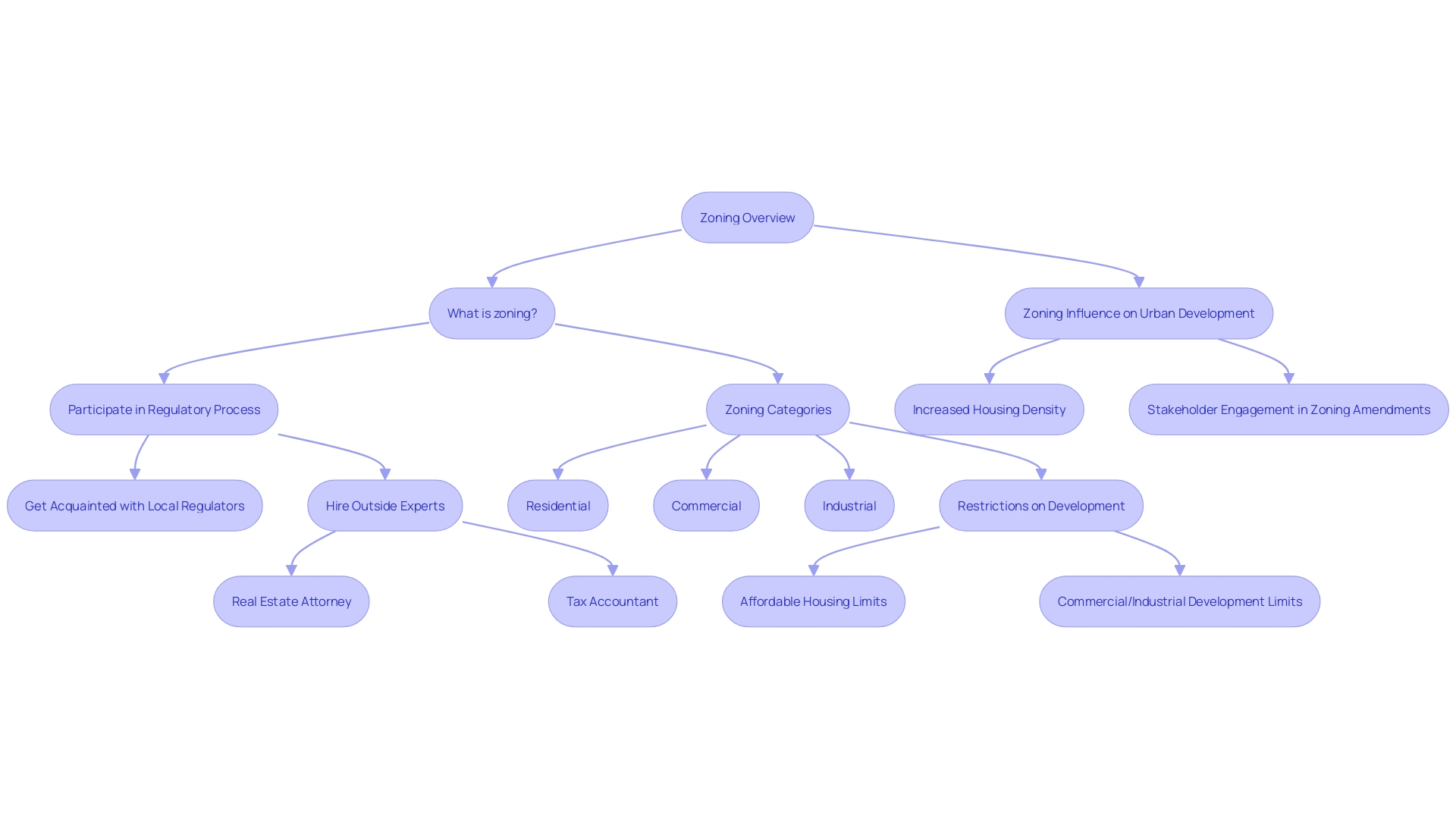
Permits and Special Variances
Navigating the intricacies of land use regulations often necessitates acquiring permits or special variances, especially when proposed plans deviate from established zoning ordinances. Permits are essentially the green light from local authorities for specific land developments, while special variances act as a bypass for rigid zoning laws when unique situations or undue hardships arise. The application process requires a meticulous approach, where one must present a compelling case to the local zoning board, detailing why the variance is crucial.
An application can fall into two categories: area or use. Area variances may involve requests such as modifying setback distances from roads, while use variances could aim to repurpose a residential property for commercial use.
The procedural road to obtaining these permissions involves a public forum, where community members can voice their support or reservations. The zoning board's decision hinges on certain conditions: the variance must not infringe on public interests and should alleviate unnecessary constraints posed by current zoning laws. It's pertinent to note that the criteria for variances are not uniform nationwide; they fluctuate across different jurisdictions.
Understanding this process is further exemplified by the California Environmental Quality Act (CEQA), which underscores the importance of informing governmental bodies and the public about the environmental impacts of proposed activities. CEQA aims to mitigate environmental harm and advocate for project modifications that reduce impacts when feasible. As illustrated by the ongoing zoning ordinance rewrite in Charlottesville, regulatory frameworks evolve over time to address changing city dynamics, highlighting the importance of staying abreast of local governance.
Complicating this landscape are the diverse types of governing entities recognized by the U.S. Census Bureau, including not only federal and state governments but also county, township, municipal, and special-purpose entities such as school or park districts. Each has the autonomy to impose its own zoning restrictions, influencing the permit and variance process.
The challenge of acquiring permits and variances is akin to the complexities faced by California utilities in mitigating wildfire risks, as noted in case studies where subjective evaluations of safety measures and economic trade-offs are commonplace. These examples serve as a reminder of the multifaceted nature of land use regulations and the necessity for a strategic approach in compliance to sidestep potential delays or complications in land development projects.
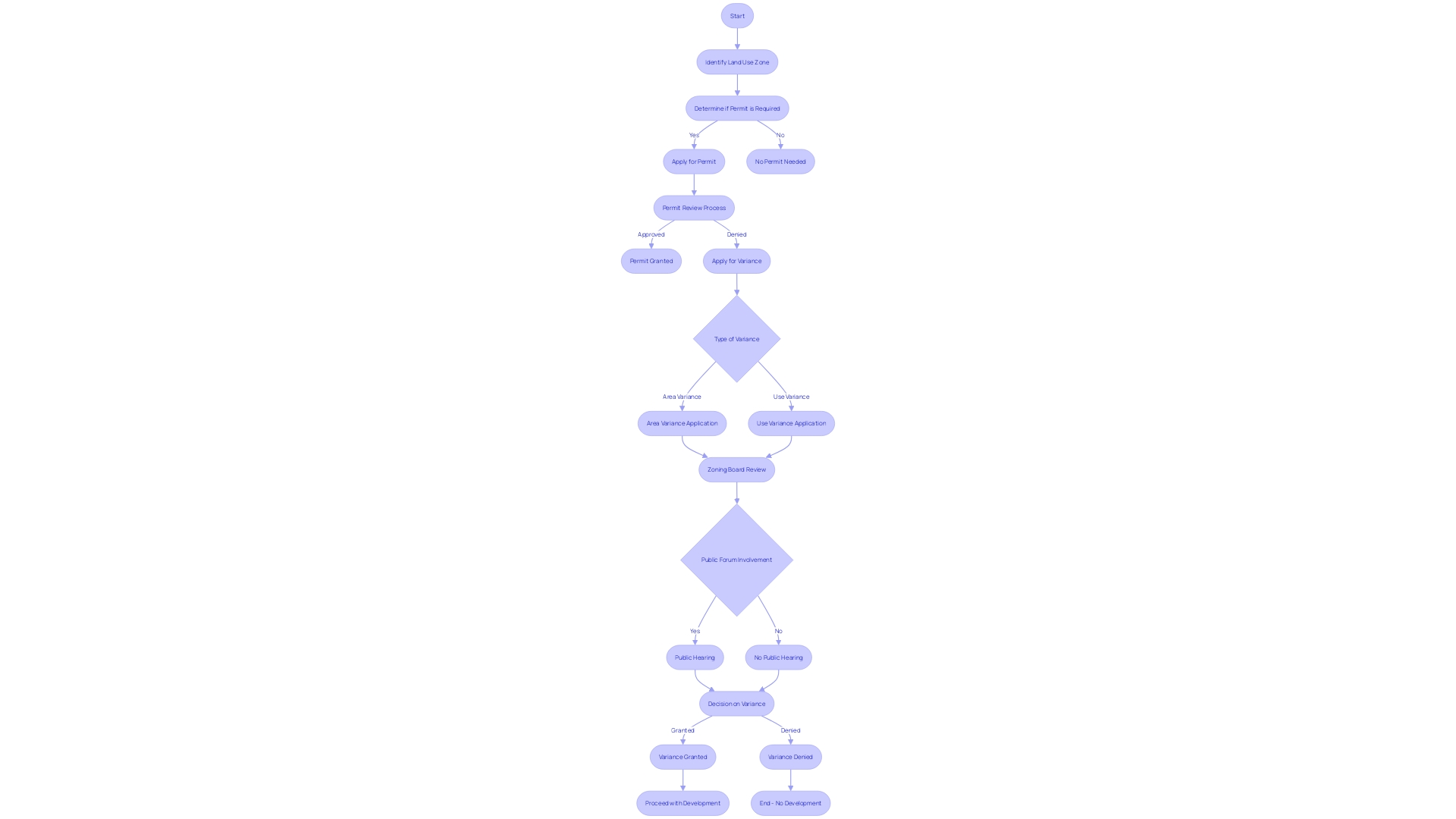
Environmental Impacts of Land Use
The interplay between land use and the environment is a multifaceted issue with far-reaching implications. When we contemplate the development of a landscape, we must weigh the ecological outcomes of our actions, particularly how they influence biodiversity, water systems, and the balance of natural habitats. Experts like Kaitlyn Spangler from Penn State's College of Ag Sciences highlight the significance of diversifying agricultural landscapes to benefit the communities intertwined with these spaces.
Likewise, Lauren McPhillips, with her expertise in water and soils management, advocates for nature-based solutions to minimize human impact on the environment.
The landscape of land use is being reshaped by innovative programs like LAND-at-scale, funded by the Netherlands Ministry of Foreign Affairs. This initiative underscores the urgent need for sustainable land management to secure equitable access to land and natural resources, thereby enhancing climate resilience and reducing land-related conflicts. It's a concerted effort to scale up successful interventions and foster knowledge-driven growth in land governance.
In the context of climate change, which the Intergovernmental Panel on Climate Change recognizes as one of the most pressing global challenges today, land governance becomes even more crucial. The LAND-at-scale program prioritizes interventions that bolster adaptation to climate change, illustrating the deep connection between land management and environmental stewardship.
Reflecting on the global scale, nearly half of the habitable land on Earth is utilized for agriculture, a staggering footprint that underscores the need for efficient land use. It's clear that the choices we make in land development have a cascading effect on the environment. As land productivity increases, the challenge remains to balance agricultural outputs with the conservation of ecosystems.
Environmental economists are pivotal in this discourse, with their research shedding light on the reciprocal relationship between human activity and land use, and how it ultimately affects societal well-being. Their studies, often supported by novel scientific data, inform major policy decisions ranging from climate change impact assessments to sustainable groundwater management.
In sum, integrating environmental considerations into land use planning is not only about mitigating adverse effects but also about fostering a symbiotic relationship between humanity and the natural world. It calls for a strategic approach that respects the delicate balance of our ecosystems while meeting the demands of development.
Sustainable Practices in Land Use
Incorporating sustainable practices into land use not only minimizes environmental impact but also secures a viable future for subsequent generations. These methods align with the Sustainable Development Goals (SDGs), which embody principles of economic, environmental, and social advancement. For instance, in Timor-Leste, conservation agriculture using green velvet beans, supported by the FAO and the EU, showcases how local initiatives can enrich soil and foster climate-smart techniques.
Similarly, the transformation of a former landfill into the UW Farm now demonstrates the potential for urban carbon sequestration and soil restoration, emphasizing the importance of maintaining healthy topsoil for crop growth and climate mitigation.
Real estate development, too, is being reshaped by sustainable paradigms. Green building standards are redefining construction processes to minimize ecological footprints, encompassing energy efficiency, renewable energy integration, and sustainable material usage. For example, the fast fashion industry's shift towards mass customization implies a reduction in waste and a move away from non-sustainable practices that contribute significantly to environmental degradation and resource depletion.
Johan Rockstrom of the Potsdam Institute for Climate Impact Research highlights the critical role of responsible land-use in stabilizing our planet's future, pointing to the necessity of preserving intact natural ecosystems and reforming agricultural practices, which are significant sources of greenhouse gas emissions.
These cases and studies serve as a reminder that sustainable land use is not just about conserving green spaces or promoting alternative transport; it's a comprehensive approach that involves preserving biodiversity, ensuring food security, and managing resources judiciously. As countries like Canada aim to conserve a greater percentage of their land and inland waters, it becomes evident that achieving sustainability is a multifaceted endeavor, requiring concerted efforts across various sectors and levels of society.
Conclusion
Land use regulations are essential for shaping cities and communities, influencing the environment, economy, and social fabric. Understanding these regulations is crucial for developers, property owners, and individuals interested in land development. With the right balance and understanding, these regulations can foster sustainable development and enhance quality of life.
Zoning plays a fundamental role in urban planning, determining the permissible use of land within different districts. While it can protect neighborhood character, it may also limit flexibility. Development agreements provide stability for both property owners and local governments, navigating the volatile real estate market.
Zoning ordinances govern factors such as building heights, setbacks, parking, and density. Understanding concepts like conditional use permits and variances is essential for responsible development and maximizing land potential.
Land use regulations significantly impact property values and quality of life. Minimum lot size regulations can affect housing affordability. Compliance with zoning regulations is crucial for responsible development and community welfare.
Building codes and standards ensure safety and sustainability.
Efforts to reform zoning ordinances and promote sustainable land use are underway, driven by the need for housing affordability, climate action, and community development. Navigating zoning maps and engaging with local planning departments are crucial steps in understanding and complying with regulations.
In conclusion, land use regulations shape our cities and communities, influencing the environment, economy, and social fabric. Understanding and navigating these regulations responsibly can foster sustainable development and enhance quality of life for current and future generations.




